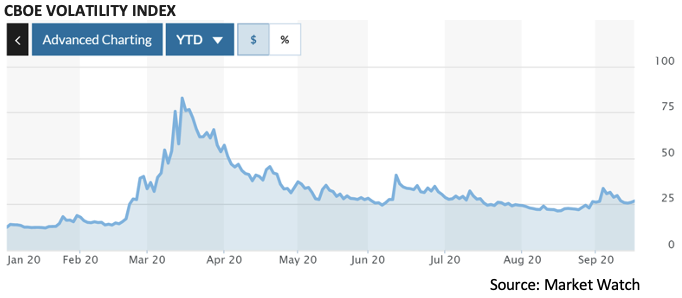Advisor Perspectives welcomes guest contributions. The views presented here do not necessarily represent those of Advisor Perspectives.
Q2 2020 hedge fund letters, conferences and more
While the world focuses on COVID-19, there’s another virus that’s getting far less attention – the volatility virus. Investors and traders who embrace and capitalize on volatility (or “vol”) are jumping into indices that track volatility. And 2020 is surely the year to do so.
The financial markets this year have experienced profound volatility that will likely carry over into 2021. Years like this one don’t come around that often: pandemic, trade wars, civil unrest and a U.S. presidential election. Each one is enough to heighten volatility, but all together translates to turbulent markets that are not just stirred, but violently shaken. In fact, 2020 began with unemployment at a 50-year low (3.6%) and by April, was the highest in 90 years (14.7%).
When uncertainty and instability reign supreme, it’s prudent to rely on experts best suited for the job. When looking for a vaccine for COVID-19, leave it to the top cellular and molecular scientists. When breaking an international narcotics ring, James Bond is your man. And when trading volatility-lined products, leave it to the experts.
Many trips, few triumphs
Market volatility has been widely followed and traded since the 1980s. The primary method of tracking volatility has been through the Cboe S&P 500 Implied Volatility Index (VIX), often referred to as the market’s “fear gauge.” The VIX measures the implied volatility of S&P 500 index options. It represents an expectation of market volatility and an indication of investor sentiment.
While the VIX is not a traded entity itself, the Cboe introduced VIX-linked products by launching VIX futures in 2004 followed by VIX options in 2006. While many retail traders chose not to trade futures or options, the launch opened the door to tradable VIX securities packaged into exchange-traded products (ETPs) including exchange traded funds (ETFs) and notes (ETNs)i. These second-generation volatility products, introduced in 2009 (some inverse, some leveraged) were not designed to replicate the VIX itself, but rather the futures indices on the VIX. They opened volatility trading to a broad audience and firmly established volatility as an asset class.
Trading volatility has risks.
Read the full article here by Shelly Goldberg, Advisor Perspectives

